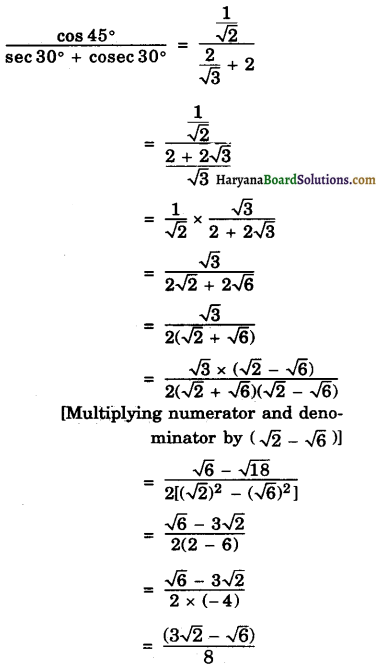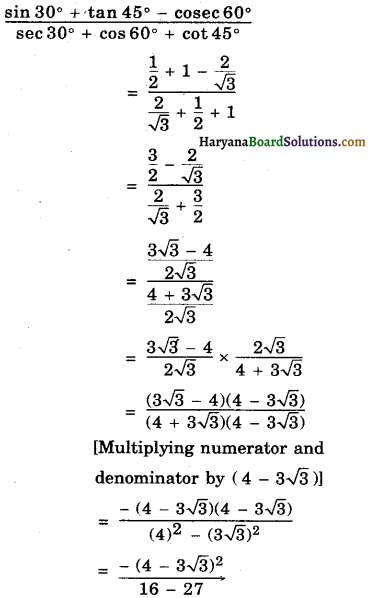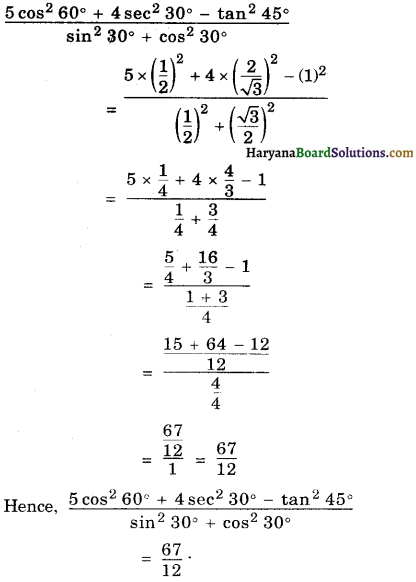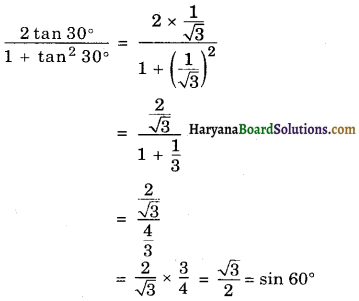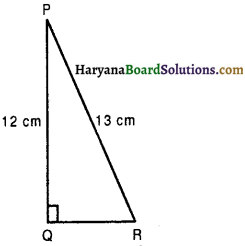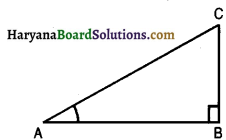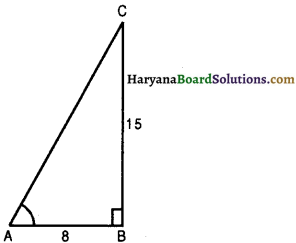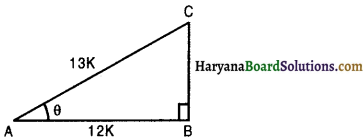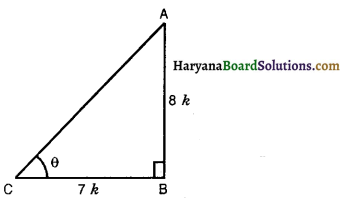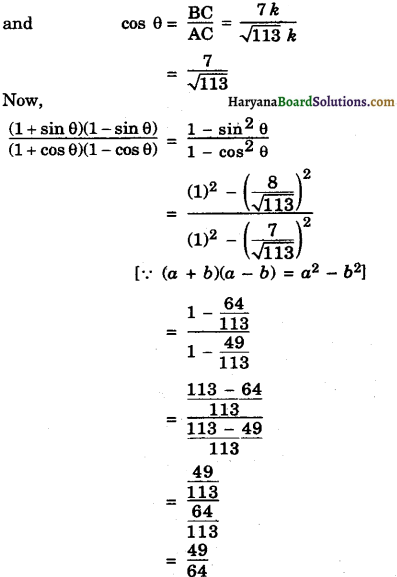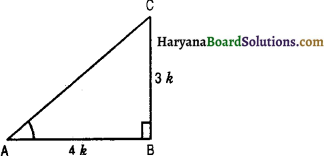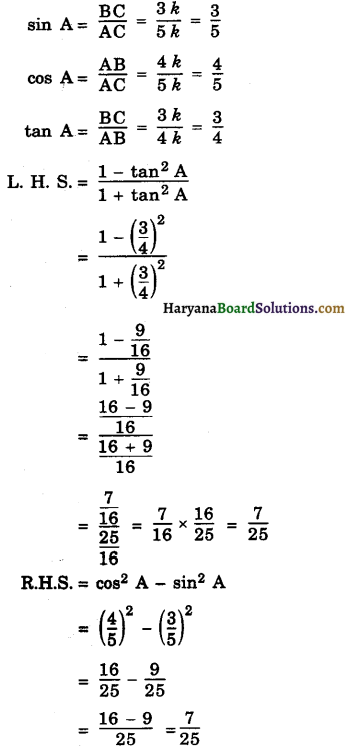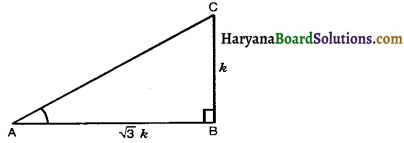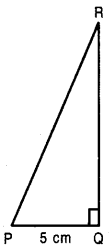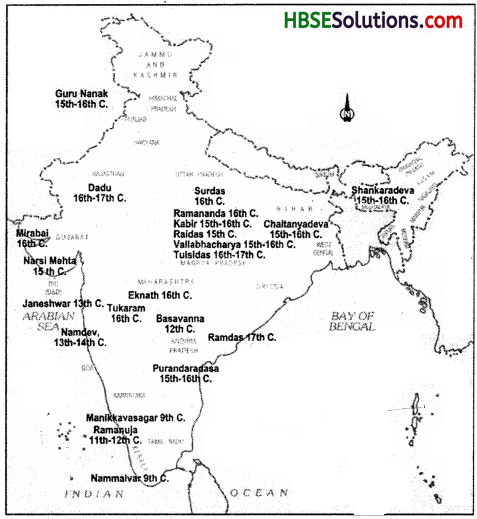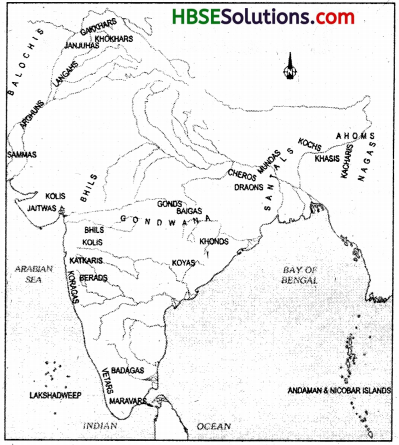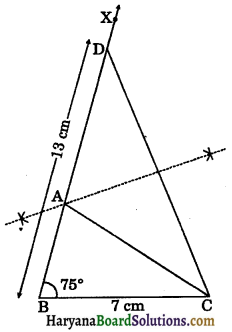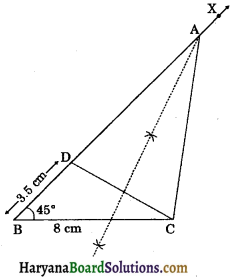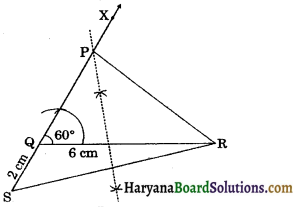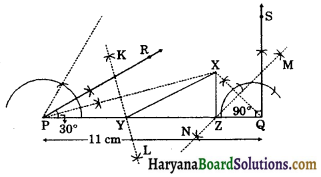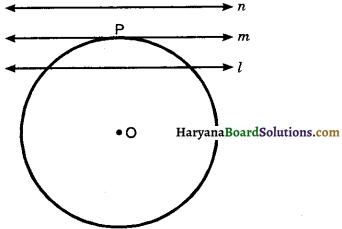Haryana State Board HBSE 7th Class English Solutions Honeycomb Chapter 6 Expert Detectives Textbook Exercise Questions and Answers.
Haryana Board 7th Class English Solutions Honeycomb Chapter 6 Expert Detectives
HBSE 7th Class English Expert Detectives Textbook Questions and Answers
Comprehension Check
Class 7 English Chapter 6 Expert Detectives Summary In Hindi HBSE Question 1.
What did Nishad give Mr Nath? Why?
Answer:
Nishad gave a bar of chocolate to Mr. Nath. He did so because he wanted to get a peep in to the trunk.
Expert Detectives Summary HBSE Class 7 Question 2.
What is “strange” about Mr Nath’s Sundays?
Answer:
Every Sunday same man comes to visit Mr. Nath in his room. The visitor talks a lot and has lunch with Mr. Nath.
Class 7 English Chapter 6 Expert Detectives Summary HBSE Question 3.
Why did Nishad and Maya get a holiday?
Answer:
Nishad and Maya got a holiday as the school did not open due to heavy rain. The streets were flooded and there was a unexpected holiday.

Working with The Text
Expert Detectives Summary In Hindi HBSE Question 1.
What does Nishad find out about Mr. Nath from Itamesh? Arrange the information as suggested below:
- What he eats
- When he eats
- What he drinks, and when
- How he pays
Answer:
- He is not very particular about what he eats. It’s always the same food—two chapattis, some dal and a vegetable.
- Mr. Nath takes two maels every morning and evening,
- He takes two cups of tea, one in the morning and one in the afternoon.
- Mr. Naths pays cash and tips wells.
Class 7 English Chapter 6 Expert Detectives HBSE Question 2.
Why does Maya think Mr. Nath is a crook? Who does she says the Sunday visitor is?
Answer:
Maya thought that he is a crook as he nust be having lots of money hidden somewhere. She feels that he looks so ordinary as sometimes criminals look very ordinary.
Some visitor visits Mr. Nath every Sunday. He is tall, fair, stout and wears spectacles. Maya thinks that visitor must be connected with Mr. Nath. He must be keeping all the loot and giving Mr. Nath’s share for expenses.
Expert Detectives Class 7 Solutions HBSE Question 3.
Does Nishad agree with Maya about Mr. Nath? How does he feel about him?
Answer:
Nishad did not pay much attention to the Maya’s views. He thinks that Mr. Nath must be lonely without friends. Nishad even gets angry with Maya for calling him a criminal. Maya’s theroies made no impression on Nishad and he had decided to be friendly with Mr. Nath.

HBSE 7th Class English Expert Detectives Important Questions and Answers
Very Short Answer Type Questions
Class 7 English Chapter 6 Expert Detectives Question Answer HBSE Question 1.
Give two physical features of Mr. Nath.
Answer:
Mr. Nath is very thin and looks as if he is very poor.
Expert Detective Question Answer HBSE Class 7 Question 2.
What makes Nishad think that Mr. Nath is not a criminal?
Answer:
Nishad thinks so because Mr. Nath doesn’t look like one and Ramesh brings meals for him.
Expert Detectives Question Answers HBSE Class 7 Question 3.
What reasons did both of them give for the scars?
Answer:
They thought that scars had been got during a shoot out or when police set fire to the house.
Class 7 English Honeycomb Chapter 6 Expert Detectives Question 4.
What type of physical appearence did Mr. Nath’s friend have?
Answer:
Mr. Nath’s friend is tall, fair short and wears spectacles
Short Answer Type Questions
Expert Detectives Class 7 Question Answer HBSE Question 1.
Maya is a very inquistive character. She makes a list of things to prove that Mr. Nath is a criminal. Discuss.
Answer:
Maya feels that criminals look quite ordinary. Being very curious, she makes a list of all the facts about Mr. Nath which might help them to trap him. The facts are noted in order like his name, behaviour, postage, friends, relations, food etc. She even goes to the extent of calling his friend his accomplice. She is not ready to beelive in any way that Mr. Nath is less then a criminal.

Class 7 English Expert Detectives Question Answer HBSE Question 2.
Sketch a character sketch of Mr. Nath.
Answer:
Mr. Nath is introduced to us to be a thin weak person. He gives the impression as if he is hungry. He has got burn scars on his face. He meets Nishad’s mother for her burn treatment. He is an introvert fellow who stays aloof all the time. He is good by nature and doesn’t fuss over food. It is his generous nature which tempts him to tip Ramesh. He doesn’t work and sits in his room all day. He doesn’t care of what he eats. On the whole he is a lonely, person with no whims and fancies.
Some Other Questions For Examination
Class 7 English Chapter Expert Detectives Question Answer HBSE Question 1.
What was Nishad’s opinion about Mr. Nath when he first saw him?
Answer:
Nishad’s opinion about Mr. Nath was that Mr Nath was a poor man. He looked very thin and he couldn’t afford to eat well.
Expert Detectives Class 7 HBSE Question 2.
What did Maya say about Mr. Nath’s scars?
Answer:
Maya thought that Mr. Nath was a criminal. She thought that Mr. Nath had been forced to come out of his house by the police by burning his house. This incident might have caused scars on his face.
Expert Detectives HBSE Class 7 Question 3.
Nishad is not ready to believe that Mr. Nath is a criminal. He tries to give a few points to justify his belief. Discuss.
Answer:
Nishad is very doubtful about Mr. Nath being a criminal. On not being invited by Mr. Nath inside the talks to Ramesh, the restaurant boy, Nishad gets information about his daily routine of meals and the way Ramesh tipped. Moreover Nishad finds Mr. Nath is very ordinary looking. Nishad doesn’t want to talk about his being detective to Maya. He even wants to have friendship with Mr. Nath. Maya’s theories seemed to have made no impression on him at all.
Class 7 English Ch Expert Detectives HBSE Question 4.
Why doesn’t Maya want Nishad to be friendly with Mr. Nath?
Answer:
Maya doesn’t want Nishad to be friendly with Mr. Nath because she thinks that if he become friendly with a crook, the cops will take him to jail with him.

Question 5.
What did Nishad want to know about Mr. Nath?
Answer:
Nishad wants to know about Mr. Nath why he was so thin and why he was so lonely. He also wanted to know why he was lonely and why he did not have any friends.
Question 6.
What happens at the end of the story? How do you like the ending?
Answer:
At the end of the story, Nishad quietly walks out of the room. Maya’s theories seemed to have made no impression on him at all.
The ending of the story is very abrupt. Mr. Nath’s reality is not made clear till the end of the story.
Multiple Choice Questions
Question 1.
Which of the following words means- look quickly and secretively’?
(a) following
(b) gaunt
(c) peep
(d) interrupt
Answer:
(c) peep
Question 2.
How old were Seven and Maya?
(a) 10 years, 7 years
(b) 7 years, 10 years
(c) 7 years, 12 years
(d) 12 years, 8 years
Answer:
(b) 7 years, 10 years
Question 3.
The children’s marble rolls into room.
(a) Mr. Nath’s
(b) mother’s
(c) father’s
(d) cop’s
Answer:
(a) Mr. Nath’s

Question 4.
Who said this to whom?
‘He’s probably got millions of rupees stashed away somewhere in that room’.
(a) Maya said this to mother.
(b) Seven said this to Maya.
(c) Maya said this to Seven.
(d) The cop said this to Maya.
Answer:
(c) Maya said this to Seven.
Question 5.
Who told children that Mr. Nath does not work anywhere?
(a) Mother
(b) Ramesh
(c) Hotel Manager
(d) Mr. Mehta
Answer:
(d) Mr. Mehta
Question 6.
What did the doctor mother tell about scars on Mr. Nath’s face?
(а) They were burn scars
(b) They were from the birth.
(c) They were temporary
(d) None of these
Answer:
(а) They were burn scars
Question 7.
What did Nishad keep in Mr. Nath’s hand?
(а) a loaf of bread
(b) a marble
(c) a bar of chocolate
(d) all of these
Answer:
(c) a bar of chocolate
Question 8.
Where did Mr. Nath live?
(a) Maya Enclave
(b) Police station
(c) Shankar House
(d) None of these
Answer:
(c) Shankar House

Question 9.
What reason docs Maya give Mr. Nath has not made any friends in Shankar House?
(а) He does not have any money.
(b) He is scared that someone will recognize him and give him up to the cops.
(c) He is not friendly at all.
(d) He is rude and unfaithful.
Answer:
(b) He is scared that someone will recognize him and give him up to the cops.
Make Sentences
Frame the sentences of your own with the help of given words.
(i) Appointment
(ii) Gaunt
(iii) Upset
(iv) Expert
(v) Doubtful
(vi) Interrupted
(vii) Unexpected
Answer:
(i) Appointment: I have taken an appointment from the doctor for a complete health check up of my father.
(ii) Gaunt: He is so weak that he always appears gaunt.
(iii) Upset: Mrs. Kumar is very upset because of her son’s poor performance.
(iv) Expert: One gets expert in doing something only after regular practice.
(v) Doubtful: His progress is doubtful because he doesn’t work very hard.
(vi) Interrupted: Mrs. Mehta scolded her son because he interrupted between his parents’ talk.
(vii) Unexpected: The poor couple had unexpected windfall gain and became very rich.
Expert Detectives Passages for Comprehension
Read the passages carefully and answer the questions that follow:
Passage – 1
‘He doesn’t look anything like a monster, Maya,’ said Seven as we walked back towards the clinic. But did you see how thin he is? Maybe he’s very poor and can’t afford to eat.’
Questions:
(i) Who is ‘lie’?
(ii) Who are Maya and Seven?
(iii) Why are they so curious about ‘he’?
(iv) Choose the ward which means ‘very huge’.
Answers:
(i) ‘He’ is Mr. Nath.
(ii) Maya and Seven are sister and brother.
(iii) They think that he is a cook and so want to know about his true identity
(iv) Monster.
Passage – 2
On the Monday following Mamma’s birthday, Seven went alone with her to the clinic at Girgaum as I was spending the evening with a schoolfriend. When they returned, Nishad told me he’d been to see Mr. Nath and I felt most annoyed that I hadn’t been there.
Questions:
(i) Why had Seven gone with her to the clinic?
(ii) Who are ‘they’?
(iii) Who is ‘I’ and why is she annoyed?
(iv) Choose a word which means antonym of ‘happy’.
Answers:
(i) Seven had gone with her because she was a doctor.
(ii) They are Nishad and his mother.
(iii) ‘I’ is Maya and she is Annoyed because Nishad had gone alone to meet Mr. Nath.
(iv) Annoyed

Passage – 3
‘Well done, Nishad, ‘I told him. ‘Now that we’ve made some progress with our inquiries, we’ll have to sort out all the facts like expert detectives so that we can trap the crook.’ Questions:
(i) Why is ‘I’ happy with ‘him’?
(ii) What progress had been made?
(iii) Who is more doubtful at him being a crook?
(iv) Choose a word which meansskilled.
Answers:
(i) ‘I’ is happy with him for having found facts above Mr. Nath.
(ii) He had been able to find about Mr. Nath’s eating habits and coming of same visitor daily.
(iii) Nishad is not ready to believe that he is a crook.
(iv) Expert.
Expert Detectives Translation in Hindi
Before you read
(Nishad, a….. ……………. no friend?
Nishad’s mother ………………… to him ….. )
पढ़ने से पहले
(निशाद, एक सात साल का लड़का जिसे सात भी कहा जाता है क्योंकि उसके नाम का अर्थ है, संगीत के सुर का सातवा सुर) और उसकी बहन माया एक श्रीमान् नाथ के लिए बहुत उत्सुक थे। क्या वह भूखे दौड़ रहा है? क्या उसका चेहरा बुरी तरह जला है? उसका कोई दोस्त क्यों नहीं है?
निशाद की माँ, एक डाक्टर, श्रीमान् नाथ को एक मरीज की हैसियत से जानती है जो बहुत नम्र व्यवहार का है। तब एक दिन बच्चों को मिलने और बातचीत का मौका मिलता है…..
1. ‘He doesn’t ……………………………. to eat.’ ‘He can’t …………………………….. that room.’
“वह राक्षस की तरह नहीं लगता, माया’, सात ने क्लीनिक की तरफ चलते हुए कहा। पर क्या तुमने देखा कि वह कितना पतला है? शायद वह बहुत गरीब है और खाना नहीं खरीद सकता।’
‘वह गरीब नहीं हो सकता अगर वह भागा हुआ अपराधी है’, मैंने उससे कहा,” उसके पास शायद उस कमरे में लाखों रुपए रखे
Word Mening: Monster-giant = राक्षस, Crook-culprit = अपराधी, Slashed-put away = रखे हुए।

2. ‘Do you ………………… looked doubtful. ‘of course …………………………downstairs.’
“क्या तुम सोचते हो कि वह अपराधी है. माया? वह ऐसा नहीं लगता’, निशाद ने शकपूर्वक देखा।
“बेशक वह एक है, सात’, मैंने कहा, “और वह भूख से पीड़ित नहीं है। श्रीमान् मेहता ने बताया कि रमेश उसके लिए नीचे रेस्टोरेन्ट से भोजन लेकर आता है।”
Word Meaning: Certainly-without doult = बेशक, Starving-suffering from hunger = भूख से पीड़ित, Possible-may be = शायद।
3. ‘But Maya………………….. Nishad said. ‘Exactly!’I………………….jewels and ……’
“पर माया, श्रीमान् मेहता ने कहा कि वह कहीं भी काम नहीं करता तो उसके पास खाने के लिए देने को पैसे कैसे हो सकते हैं? निशाद ने कहा।
“बिल्कुल !” मैंने खुशी से कहा, उसके पास बहुत सारे पैसे कहीं छिपे हुए हैं। शायद उसके कमरे के संदूक में। शायद वह सोने-चाँदी और जवाहरात से भरा है।’
Word Meaning: Exclaimed-To cry out = हर्ष से कहना।
4. ‘What rubbish…………….or something.’ – “क्या मूर्खता है”, निशाद ने हस्तक्षेप करते हुए कहा।।
‘मैं जानता हूँ मैं ठीक हूँ. मूर्ख’, मैंने उससे कहा। वैसे सात, क्या तुमने उसके दाग देखें? मैं नहीं देख सका क्योंकि बहुत अंधेरा था, पर मैं शर्त लगा सकता हूँ कि पुलिस या किसी के साथ गोलीबारी में ऐसा हुआ है।’
Word Meaning: Intrupted, Scars.
5. ‘Mummy told ………………… said firmly. ‘Perhaps the ………………… looked unsure.
“मम्मी ने हमें स्पष्ट रूप से कहा कि वह जलने के निशान हैं।” निशाद ने दृढतापूर्वक कहा। ‘शायद पुलिस ने उसे बाहर निकालने के लिए घर को आग लगा दी’, मैंने सुझाव दिया। सात अनिश्चित लग रहा था।
Word Meaning: Unsure-not certain = अनिश्चित।
6. On the .. ……………… been there.
माँ के जन्म दिन के बाद सोमवार को, सात गिरगाम क्लीनिक उनके साथ अकेला गया। क्योंकि मैं अपनी शाम अपने स्कूल के दोस्त के साथ बिता रहा था। जब वह वापिस आए थे, निशाद ने बताया कि वह श्रीमान् नाथ को मिलने गए थे। मुझे बहुत गुस्सा आया क्योंकि मैं वहाँ पर नहीं था।
Word Meaning: Annoyed-to be angry = गुस्से में।
7. Seven had ………………………. Mr Nath.’ The man …………………… marble?’
सात श्रीमान् नाथ के दुर्बलतापूर्वक चेहरे से बहुत बहुत परेशान था और उसको पूरा विश्वास था कि वह भूख से पीड़ित था। उसने मुझे बताया कि उसने श्रीमान् नाथ का उस शाम को दरवाजा बहुत जोर से खटखटाया और कहा, ‘श्रीमान् नाथ जल्दी से दरवाजा खोलो।’ उस व्यक्ति ने दरवाजा खोलते हुए कहा “क्या दूसरा पत्थर खो गया?”
Word Meaning: Gaunt-Lean = दुर्बल. Starving-Suffering from extreme hunger = भूख से पीड़ित, Knocked-Hit on the door = खटखटाना।

8. Ile had ………………………………. into it. ‘Did you …………….. …………… I asked. उसने वास्तव में मेरे भाइयों को पहचान लिया।
“नहीं”, निशाद ने कहा। उसने उस आदमी का हाथ अपने हाथ में लिया, और चॉकलेट उसके हाथ में थमा दी।
“क्या तुम्हें, संदूक में झाँकने का मौका मिला, सात?” मैंने पूछा।
Word Meaning:Obviously-clearly = वास्तव में, Thrust-togive = देना, Peep to look = देखना।
9. Nishad looked …………………….. to him’.
निशाद निराश लग रहा था। उसने मुझे अन्दर भी आने को नहीं कहा।’ तब वह मुस्कुराया पर। मैं कुछ चीज पता लगा पाया, माया। मैं नीचे रेस्टोरेन्ट में गया जहाँ रमेश काम करता है और उससे बात की।
Word Meaning: Disappointed-to frus. trate = निराश।
10. “Good for you……………him properly.’ Seven looked…………………..and tips’well.
“तुम्हारे लिए अच्छा है, श्रीमान् गुप्तचर” उसकी पीठ पर थपथपाते हुए मैंने कहा, “मुझे आशा है कि तुमने उससे उचित प्रश्न पूछे हैं।
सात बहुत खुश लगा। रमेश ने बताया कि वह श्रीमान् नाथ के लिए हर सुबह और शाम दो वक्त का खाना और दो कप चाय ले जाता है। रमेश ने कहा कि वह खाने के बारे में ज्यादा विशेष रुचि नहीं रखता। हमेशा एक जैसा ही खाना रहता है-दो रोटी, दाल और सब्जी। श्रीमान् नाथ नकद भुगतान करते हैं और बख्शीश भी।
Word Meaning: Detective-One who delets criminals = गुप्तचर, Patted-to lovingly stroke the back = थपथपाना, Cash-Ready money = नकदी।
11. ‘Ramesh told ………….. hardly speaks.’
“रमेश ने मुझे कुछ बहुत अजीब बताया’, माया, सात ने कहा, “लगभग हर रविवार वह श्रीमान् नाथ के कमरे में दो (आदमियों के लिए) खाने ले जाता है और एक ही आदमी उस कमरे में हमेशा होता है। वह लम्बा, खूबसूरत. प्रबल और चश्मा पहनता है। रमेश कहता है कि उसका मेहमान बहुत बोलता है, श्रीमान् नाथ के विपरीत जो बहुत कम बोलते हैं।”
Word Meaning: Stout-Strongly built = स्थूल शरीर का।
12. ‘Well done…………………….. the crook.’ ‘llow you ……………………… so ordinary !’
“ठीक है निशाद”. मैंने उससे कहा, “हमने अपनी पूछताछ में कुछ सफलता पर ली है. हमें निपुण गुप्तचर की तरह सच ढूँढना पड़ेगा ताकि हम अपने जाल में फंसा सकें।” ‘तुम कैसे कह सकती हो माया’- सात ने आह भरते हुए कहा “तुम कैसे अनुमान लगा सकती हो कि वह अपराधी है? वह बिल्कुल ही साधारण लगता है।”
Word Meaning: Progress-to move for ward – सफलता, Inquiries-to wish to know = पूछताछ, Experl-Well equipped = निपुण, Possibly-may be = शायद।
13.Criminals can………………….doubtful. The monsoons ……………………… holiday.
अपराधी काफी साधारण लग सकते हैं, मैंने एकदम कहा। ‘क्या तुमने कल अखबारों में हैदराबादी घर लूटने वालों की तस्वीर देखी? वह सड़क चलते किसी भी आदमी की तरह लग रहा था।’ निशाद ने शकभरी नजरों से देखा।
अगले दिन वर्षा शुरू हो गई। बिजली कड़कने के साथ काले बादल छा गए और गड़गड़ाहट के साथ तूफानी वर्षा होने लगी। भारी वर्षा से सारी सड़कों में बाढ़ आ गई। गर्मी की छुट्टियों के बाद स्कूल खुला था, पर उस पानी से भरी सड़कों पर से यातायात नहीं गुजर सकता था और आकस्मिक छुट्टी हो गई थी।
Word Meaning: Criminal-Who commited crimes = अपराधी, Unexpected-not to expected = अवाक्षित, Accompanied to be along with = साथ में, Blinding-unable to see = धुंध, Roaringdeep sound as a lion = गरजना, Fury-angry = गुस्से से।

14. I thought……………………………CROOK. Expert Detectives …………. Whole World.
मुझे लगा कि मैंने समय सही रूप से बिताया है। मैं अपने सोने के कमरे में कुछ कागज रख कर बैठा था। मैंने बड़े शब्दों में लिखा- एक अपराधी को पकड़ना हैनिपुण जासूस निशाद और माया पण्डित-पूरी दुनिया द्वारा नियुक्त।
Word Meaning: लिखें
15. Then I …………………………….. I asked. lle looked ………………………….. to hear?’
तब मैंने लिखना आरंभ किया। लगभग आधे घंटे बाद, मैं सात की तरफ मुड़ा जो अपने पट के बल लेटा था. उसकी ठोड़ी उसके हाथ में थी और वह हास्यप्रद पुस्तक पढ़ रहा था। ‘तुम सुनना चाहते हो कि मैंने क्या लिखा है?’ मैंने पूछा।
उसने प्रश्नवाचक मुद्रा से मुझे देखा। जान ली है. मैंने श्रीमान् नाथ के बारे में उसे जाल में फंसाने के लिए सारी सच्चाई जान ली है,’ मैंने कहा। “सुनना चाहते हो?”
Word Meaning: Palms-Lowerside of hand = हाथ का हथेलि, Questionigly-In a question = प्रश्नात्मक, Chin-front part form of lower jaw = ढोडी।
16.Seven nodded ……………… mannerless.
सात ने स्वीकृति में सिर हिलाया ‘पहला सच’ मैंने पढ़ा, ‘उसका नाम श्रीमान् नाथ है। हमें उसका पहला नाम ढूँढना है।’
‘क्या तुम सोचते हो यह उसका वास्तविक नाम है, माया?’ निशाद ने पूछा।
(नहा,” मन कहा। “ज्यादातर अपराधी ऐसे होते हैं।’ मैंने मि. नाथ के बाद एक बड़ा प्रश्न चिह्न लगाया।)
‘दूसरा सच’ मैं पढ़ता रहा, ‘शंकर घर के किराएदार कहते हैं कि वह पागल, अजीब और रूखे हैं।’ ‘तीसरा’ यह कि ‘वह किसी से बात नहीं करता और बदतमीज है।’
Word Meaning: Discover-to find = uteri, Tenants-one who stay on rent = किराएदार, Mannerless-without manners = बिना तमीज के।
17. ‘But he …………………….. interrupted. lle only ………….. nodded.
‘पर उसने हमसे बात की, माया, और माँ कहती है कि वह बहुत नम्न है,’ निशाद ने हस्तक्षेप करते हुए कहा। ‘उसने मजबूरी में हमसे बात की’ मैंने कहा, और क्योंकि वह माँ से इलाज करवा रहा था, उसने नम्न व्यवहार किया। ‘चौथा सच’ उसे कोई पत्र नहीं मिलते।’ सात ने स्वीकृति में सिर हिलाया।
Word Meaning: Interrupted-to interfere = हस्तक्षेप करना।
18. ‘Number 5……………………….. of him.
“क्रम पाँच: वह एक वर्ष से शंकर हाउस के दस नंबर कमरे में रह रहा है.’मैं बोलता रहा। क्रम छ:: वह काम नहीं करता और पूरा दिन अपने कमरे में बैठा रहता है।
‘क्रम सात’: शंकर हाउस के बच्चे और कुछ बड़े भी उससे डरते हैं।
19. 8: lle ……………….. anything, Seven?’
क्रम आठ; उससे एक चश्मे वाला, गोरे, मोटे आदमी के – अलावा और कोई मेहमान मिलने नहीं आता।
क्रम नौः उसके लिए रमेश नीचे रेस्टोरेन्ट से उसके कमरे तक खाना और चाय लेकर जाता है। वह इस बात पर ध्यान नहीं देता कि वह क्या खाता है, अपना बिल एकदम दे देता है और सही सी
बखशशि भी देता है। इससे हमारी सूची समाप्त होती है। सात क्य मैं कुछ भूल गया?
Word Meaning: Spectacled-earing spectacles: चश्मा पहने, Immediately-at once = तत्काल।
20. Nishad had ……………….. said Nishad.
निशाद सच्चाई की तरफ ज्यादा ध्यान नहीं दे रहा था। वह सिर्फ यह कह सकता था. बेचारा आदमी, माया. वह शायद अकेला होगा अगर उसका कोई दोस्त नहीं होगा।’
‘एक अपराधी के दोस्त कैसे हो सकते हैं?’ मैंने एकदम चिल्लाते हुए कहा।’
‘कम से कम उसका एक दोस्त तो है, वह जो रविवार को मिलता है,’ निशाद ने कहा
Word Meaning:Obviously-clearly = स्पष्ट, Lonely-alone = अकेला।

21. A brilliant ……………… I’m right.’
एक अच्छा विचार मेरे दिमाग में आया। वह आदमी लूट में श्रीमान् नाथ का साथी होगा’, मैंने कहा ‘शायद वह सारा लूटा हुआ सामान रखता है और वह अपने साथी, श्रीमान् नाथ को खर्च के लिए उसका हिस्सा देने आता है। बस इतना ही! मैं निश्चित हूँ कि मैं ठीक हूँ।’
Word Meaning: Accomplice—partner = सहभागी, Expenses-to spent money – खच
22. If you ………………….. generous tips.’ ‘Ramesh probably…………………….. I said.
‘अगर तुम उसको अपराधी कहने पर विवश हो, मैं नहीं सोचता कि मैं तुम्हारे साथ किसी बात पर विचार-विमर्श करना चाहता हूँ ‘माया’, निशाद ने गुस्से से कहा। वह इतना बुरा आदमी नहीं हो सकता अगर वह रमेश को इतनी दयालुता से बख्शीश देता है।’ _ ‘रमेश शायद उसकी पिछली जिन्दगी के बारे में कुछ जानता है, इसलिए श्रीमान् नाथ उसको चुप रहने के लिए रिश्वत दे रहे होंगे’. मैंने कहा।
Word Meaning: Discuss-to examine by argument – वाद-विवाद, Generous-hind = दयालु, Tip-a small amount of money = बख्शीश।
23. Nishad glared………………… with him. “How can ……………….. I asked.
T’ll cooperate……………………… me angry.’
निशाद ने गुस्से से अपनी बाजू को छाती पर ताने हुए मुझे देखा। मैं उससे नाराज हो रहा था।
“हम किस तरह से अपनी छान-बीन में सफलता प्राप्त कर सकते हैं, यदि तुम्हारा यही रवैया रहा सात?” मैंने कहा। ‘मैं तभी साथ दूंगा अगर तुम मुझे इस बात का विश्वास मिला दो कि वह भगोड़ा हुए अपराधी है.’ सात ने कहा। “तुम मुझे बहुत नाराज करते हो।”
Word Meaning: Glared-To looke con: stantly = घूरना, Investigations-to find out = छान-बीन. Cooperate-touworke together = साथ काम करना, Escaped-run away = दौड़ जाना।
24. I almost …………………………. tell me?’
Nismad looked ………………….. lives alone.’
मैने लगभग उसे मारते हुए कहा ‘मैं तुम्हें नाराज कर रहा हूँ. तुम बेवकूफ, में चिल्लाया। “तुम मुझे पागल कर रहे हो! इस सब छानबीन का क्या अर्थ है अगर वह अपराधी नहीं है? अगर तुम सोचते हो कि वह कोई नहीं है तो उसके बारे में क्यों परेशान हो। कृपा सा मुझे बताओ?
निशाद ने सोच-विचार से देखा। ‘मैं पता लगाना चाहूँगा कि वह इतना पतला क्यों है और वह इतना अकेला क्यों है। मैं जानना चाहता हूँ कि उसका कोई दोस्त क्यों नहीं है और वह अकेला रहता है।’
Word Meaning: Stupid Foolish = मूर्ख, Enqueiries-to find out = to worry aboult = परेशान होना, Lonely-alone = अकेला।
25. “Try to …………………………… the cops.’
‘सात समझने की कोशिश करो’, मैंने उससे कहा, “अगर वह एक वर्ष से शंकर हाउस में रह रहा है और एक भी दोस्त नहीं बनाया, शायद इसमें कुछ गलत है। वह स्पष्ट रूप से डर रहा है कि कोई उसे पहचान कर पुलिस को न सौंप दे।”
Word Meaning: Obviously-clearly = स्पष्ट रूप से, Seared to be afrid – डरना, Recognizeto identify = पहचान लेना।
26. ‘Maybe no……………………. his friend.’
‘शायद उसके साथ किसी ने दोस्ती करने की कोशिश नहीं को’ निशाद ने विरोध में कहा।
तुम्हारे बारे में कोई भी क्यों परेशान होगा? तुमने देखा कि एक बुरा भालू कैसा होता है’, मैंने कहा। निशाद ने दृढ़ता से कहा, “मुझे परवाह नहीं है’ मैं उससे पसंद करता हूँ और उसका दोस्त बनने की कोशिश करूंगा।
Word Meaning: Protested-to raise your voice = विद्रोह में आवाज उठाना, Stubbornly-Ina harsh = कठोर आवाज में।

27.’Friends with …………………. you idiot?’
Nishad merely ……….. at all.
‘अपराधी के साथ मित्रता ! हा ! तुम पागल हो. सात, मैंने कहा, “पुलिस तुम्हें उसके साथ जेल ले जाएगी। बेवकूफ, क्या तुम ऐसा चाहते हो?”
निशाद ने मुश्किल से मेरी तरफ घूरा और चुपचाप कमरे से बाहर निकल गया। मेरी विचारधारा ने उस पर कोई प्रभाव नहीं छोड़ा था।
Word Meaning: Theories-concept = विचारधारा, Merely-just = सिर्फ. Glared-to look constantly = घूरना, Impression-Constanteffect = प्रभाव।
Expert Detectives Summary in English
Nishad a five year old boy and his sister Maya are very curious to know about Mr. Nath. They think that he is poor. Still they are perplexed that if he is a run away crimnal then he can’t be poor.
Both Nishad and Maya act as detecives. It is certain assumptions which derive them to the canclusion. They think that scars on his face were formed during police shoot out or when fire had burnt burnt to force him out.
Nishad makes a lot of inquiries about Mr. Nath’s meals from Ramesh. Ramesh tells about his eating habits and that the same man comes to visit every Sunday.
Both of them like expert detectives sat to detect the case. Maya made a list of nine main points to prove their case. On listening to all the facts laid down by Maya, Nishad pitied Mr. Nath. They took the friend of Mr. Nath to be his accomplice. Nishad feels that if Mr. Nath gives such tips than he cannot be a bad man.
Nishad is very curious to know about the true identity of Mr. Nath and wants to befriend Mr. Nath.
Expert Detectives Summary in Hindi
सारांश निशाद, एक सात साल का लड़का और उसकी बहन माया श्रीमान् नाथ के बारे में जानने के लिए बहुत उत्सुक हैं। वह सोचते हैं कि वह गरीब है पर फिर भी वह इस बात से बहुत परेशान हैं कि अगर वह अगोड़ा अपराधी है तो वह गरीब नहीं हो सकता।
दोनों निशाद और माया गुप्तचरों का काम करते हैं। कुछ धारणाएँ उनको निष्कर्ष पर पहुँचाती हैं। वह सोचते हैं कि उसके चेहरे पर निशान पुलिस की गोला-बारी में या जब उसको निकालने के लिए आग लगाई गई तब बने होंगे। निशाद रमेश से श्रीमान् नाथ के भोजन के बारे में पता लगाता है। रमेश उनके खाने की दिनचर्या के बारे में बताता है और यह भी कि ऐसा ही एक व्यक्ति रविवार को उनके घर आता है।
दोनों निपुण जासूस की तरह केस की छान-बीन करते हैं। माया ने नौ मुख्य बातों की एक सूची बनाई। निशाद को वे सब बातें सुनने पर दया आने लगी। उन्होंने श्रीमान् नाथ के दोस्त को अपना साथी माना। निशाद महसूस करता है कि अगर वह इतनी बख्शीश दे सकता है तो वह बुरा आदमी नहीं हो सकता।
निशाद श्रीमान् नाथ की सच्चाई जानना चाहता है और उनसे दोस्ती करना चाहता है।
![]()
![]()
![]()
![]()
![]()
